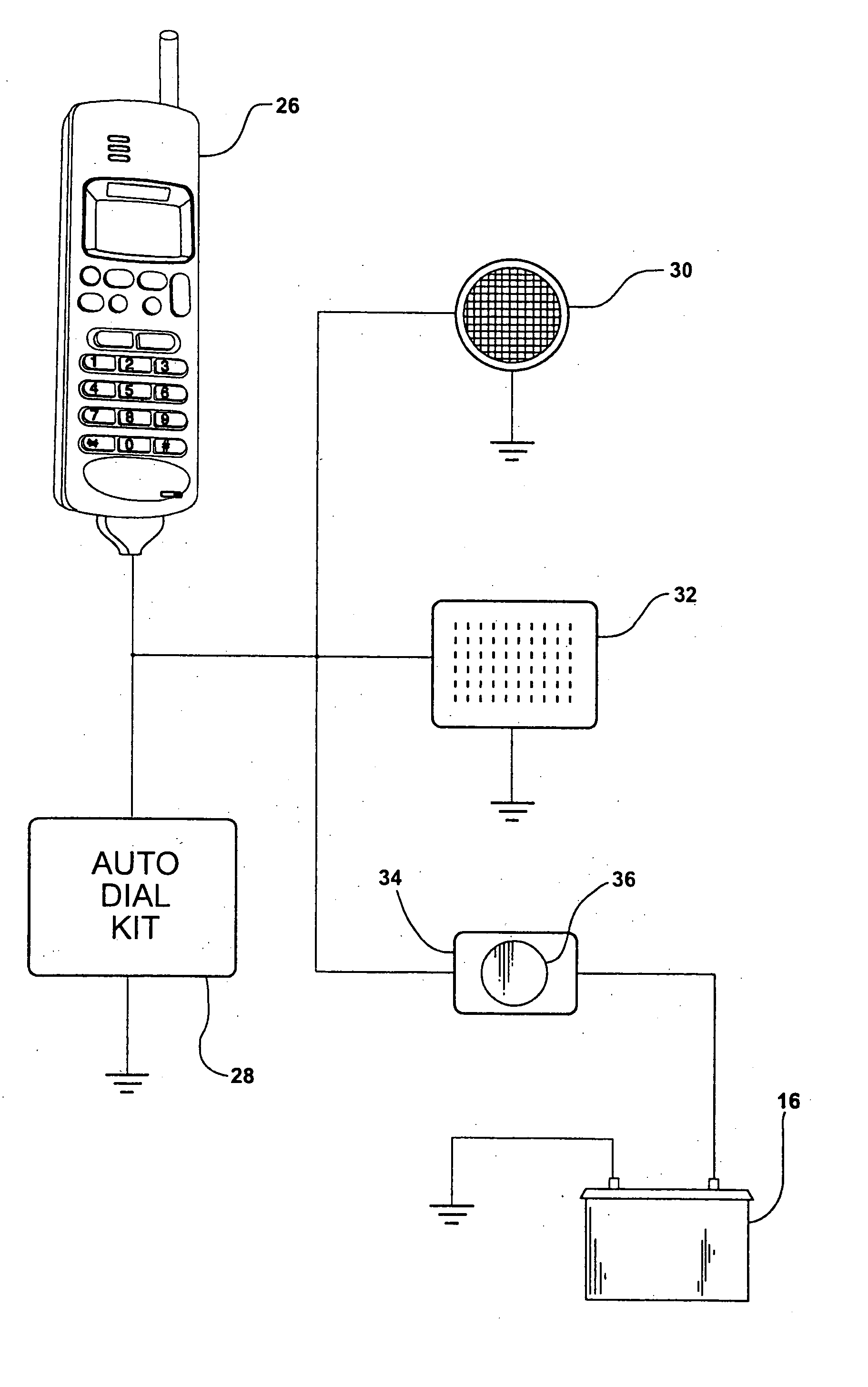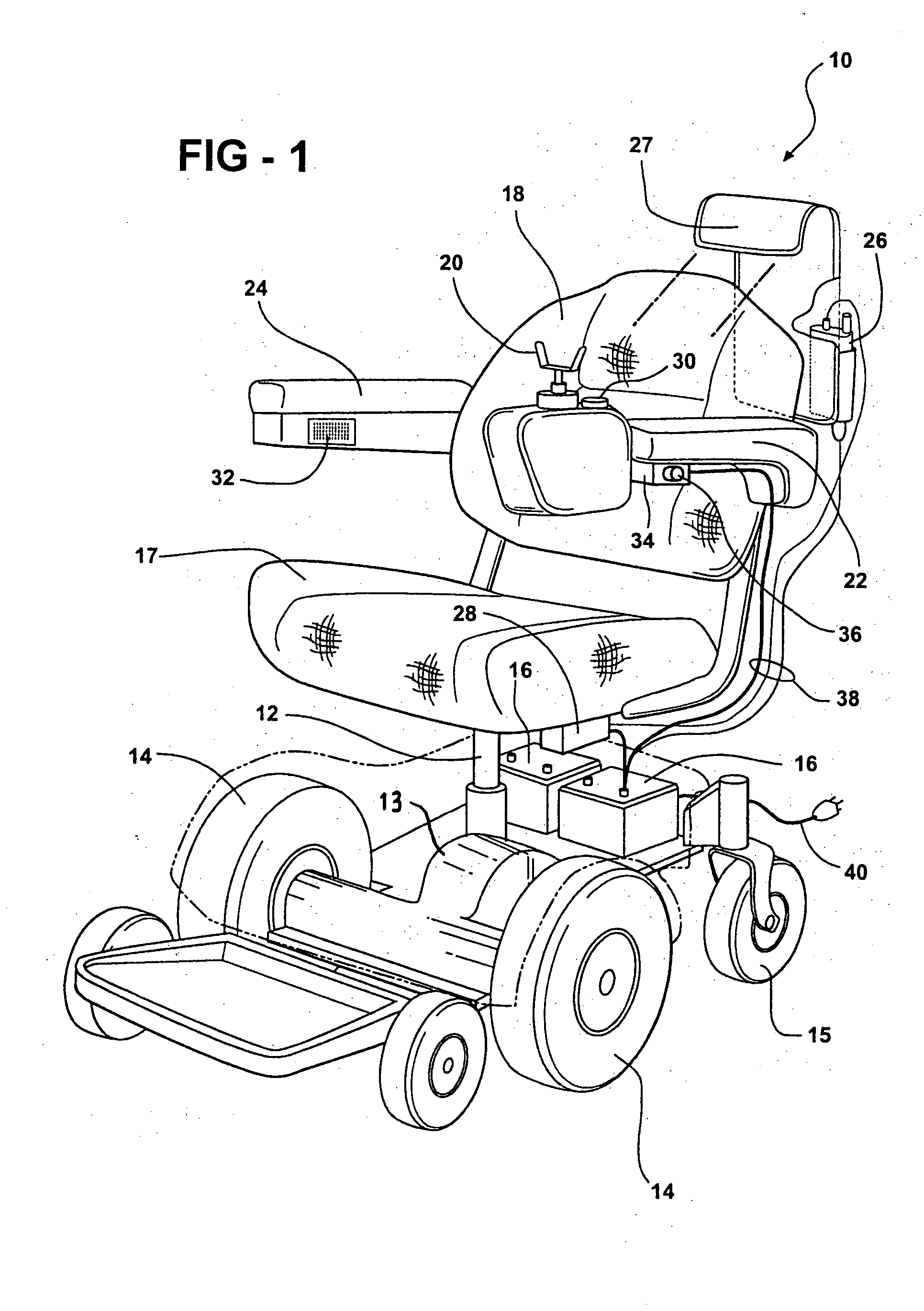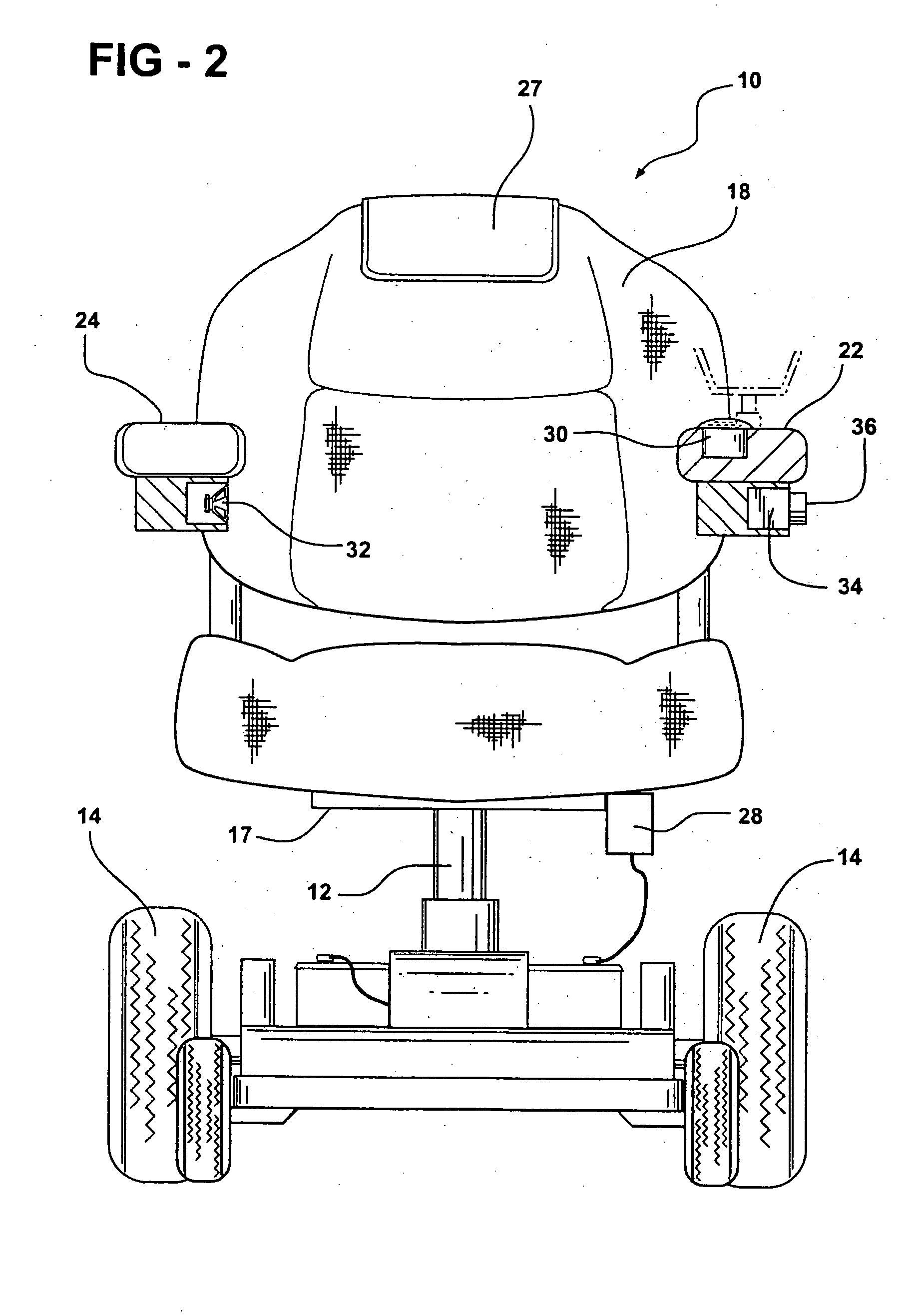Wireless telephone system for electrically powered wheelchair
a wheelchair and wireless technology, applied in the field of wireless telephones, can solve the problems of denying many handicapped persons the unassisted use of all telephones, requiring a high degree of manual dexterity and fine motor control, and unable to solve the problem of hands-free features
- Summary
- Abstract
- Description
- Claims
- Application Information
AI Technical Summary
Benefits of technology
Problems solved by technology
Method used
Image
Examples
Embodiment Construction
[0022] Referring to the drawing, an electrically powered wheelchair 10 is shown to comprise a frame 12 supported on opposed drive wheels 14 and castered rear wheels 15. A 24-volt electric drive 13 is powered by two 12-volt automotive batteries 16 connected in series. Occupant accommodations include a padded seat 17 attached to an adjustable backrest 18. A joystick control 20 is mounted on the forward end of a left armrest 22. A right armrest 24 is mounted on the opposite side of the backrest 18 and frame 12.
[0023] The joystick control 20 is of the cradle-type and requires that the occupant / driver of the chair 10 has control over movement of the left arm thereby to make direction and speed maneuvering inputs to the chair drive through the cradle-type joystick 20. Such inputs do not require finger movement or grasping.
[0024] In accordance with the invention a cellular telephone 26 having an integral antenna is placed in a back pack 27 mounted on the backrest 18. The cellular telepho...
PUM
 Login to View More
Login to View More Abstract
Description
Claims
Application Information
 Login to View More
Login to View More - R&D
- Intellectual Property
- Life Sciences
- Materials
- Tech Scout
- Unparalleled Data Quality
- Higher Quality Content
- 60% Fewer Hallucinations
Browse by: Latest US Patents, China's latest patents, Technical Efficacy Thesaurus, Application Domain, Technology Topic, Popular Technical Reports.
© 2025 PatSnap. All rights reserved.Legal|Privacy policy|Modern Slavery Act Transparency Statement|Sitemap|About US| Contact US: help@patsnap.com



